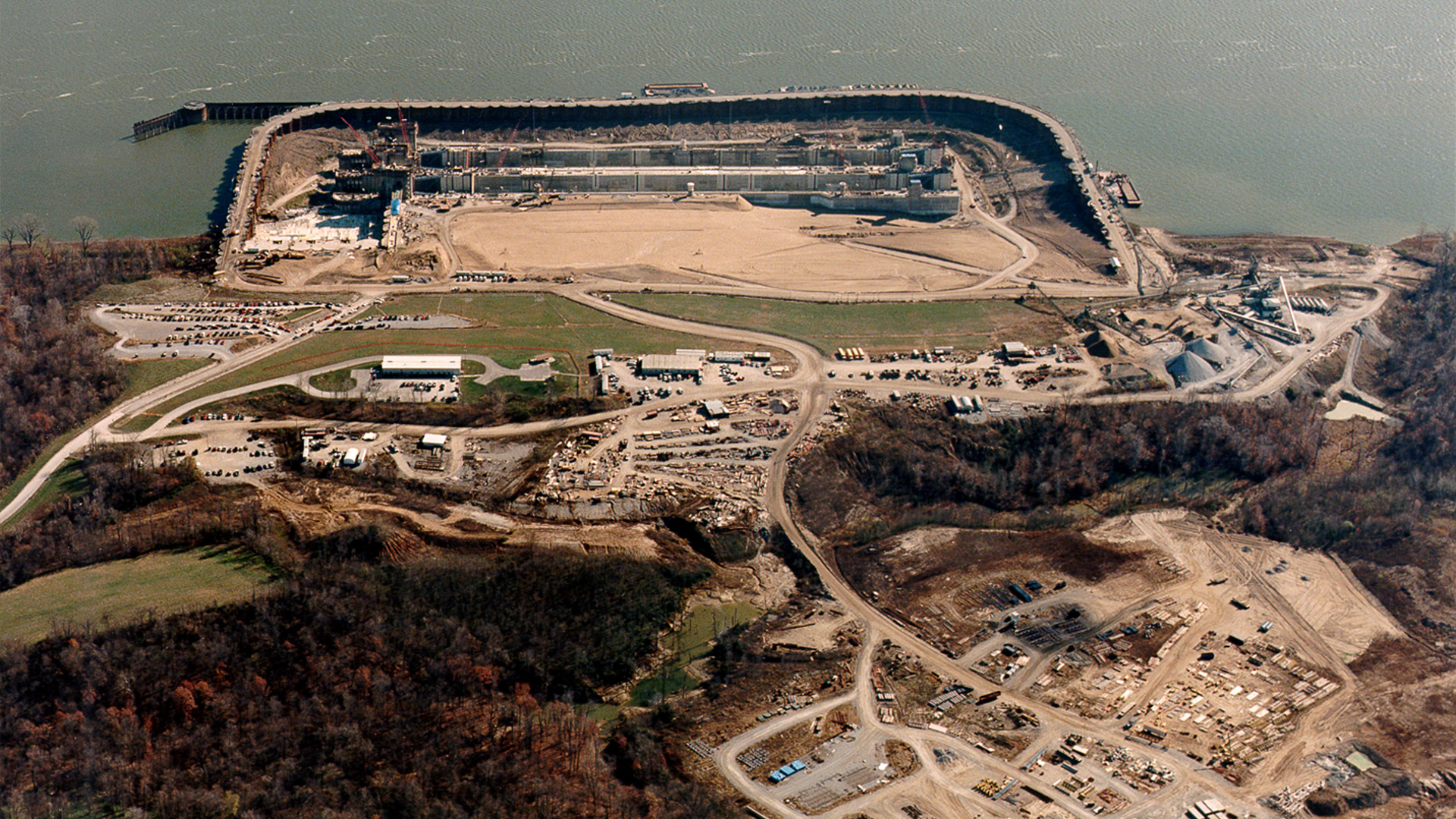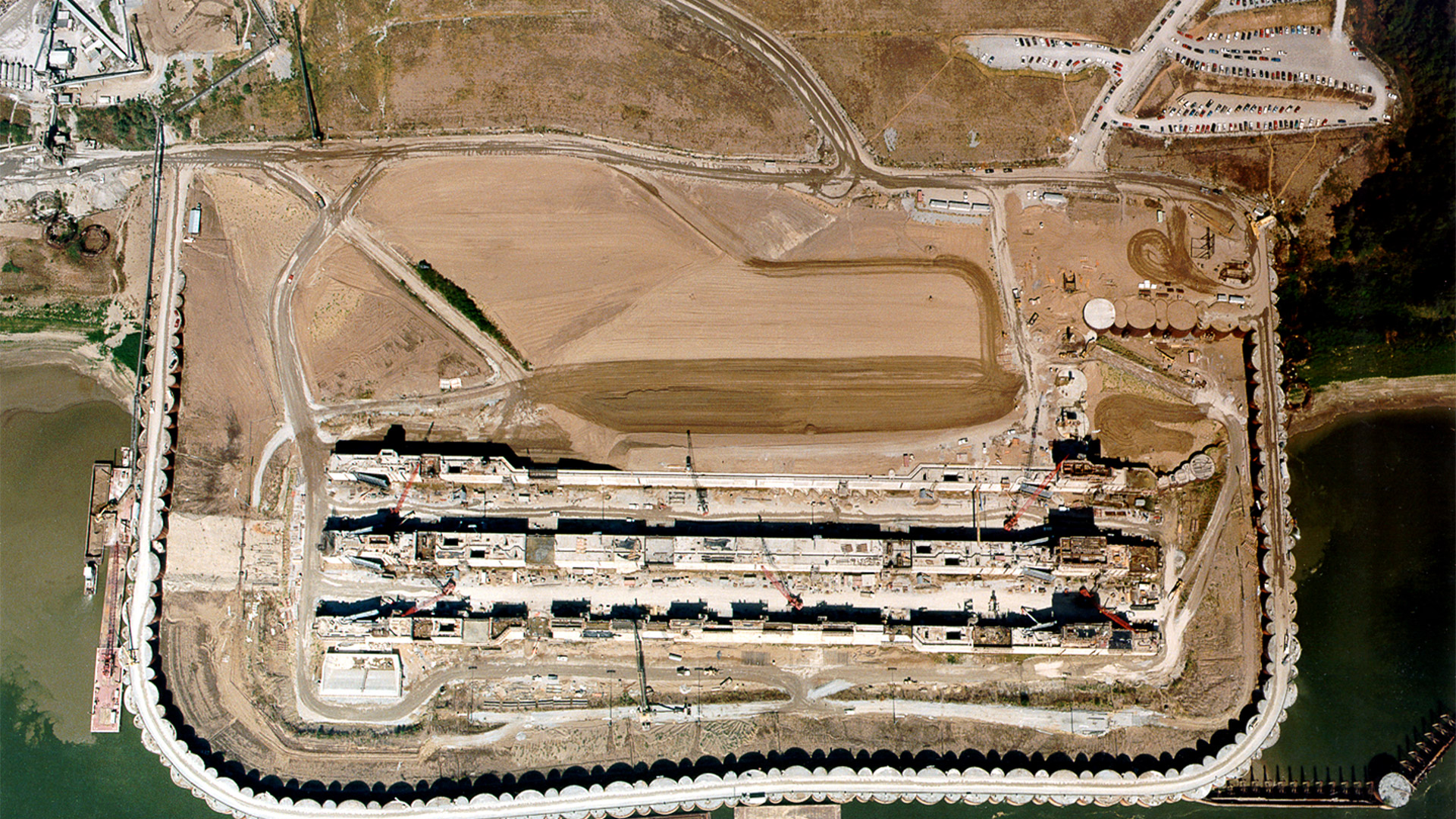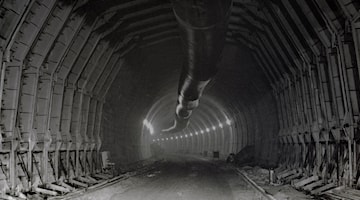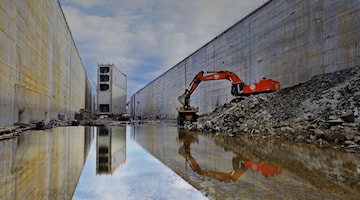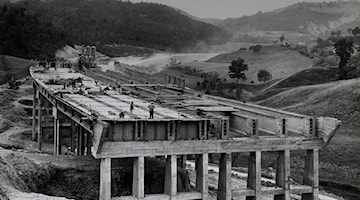Olmsted Navigational Lock Illinois
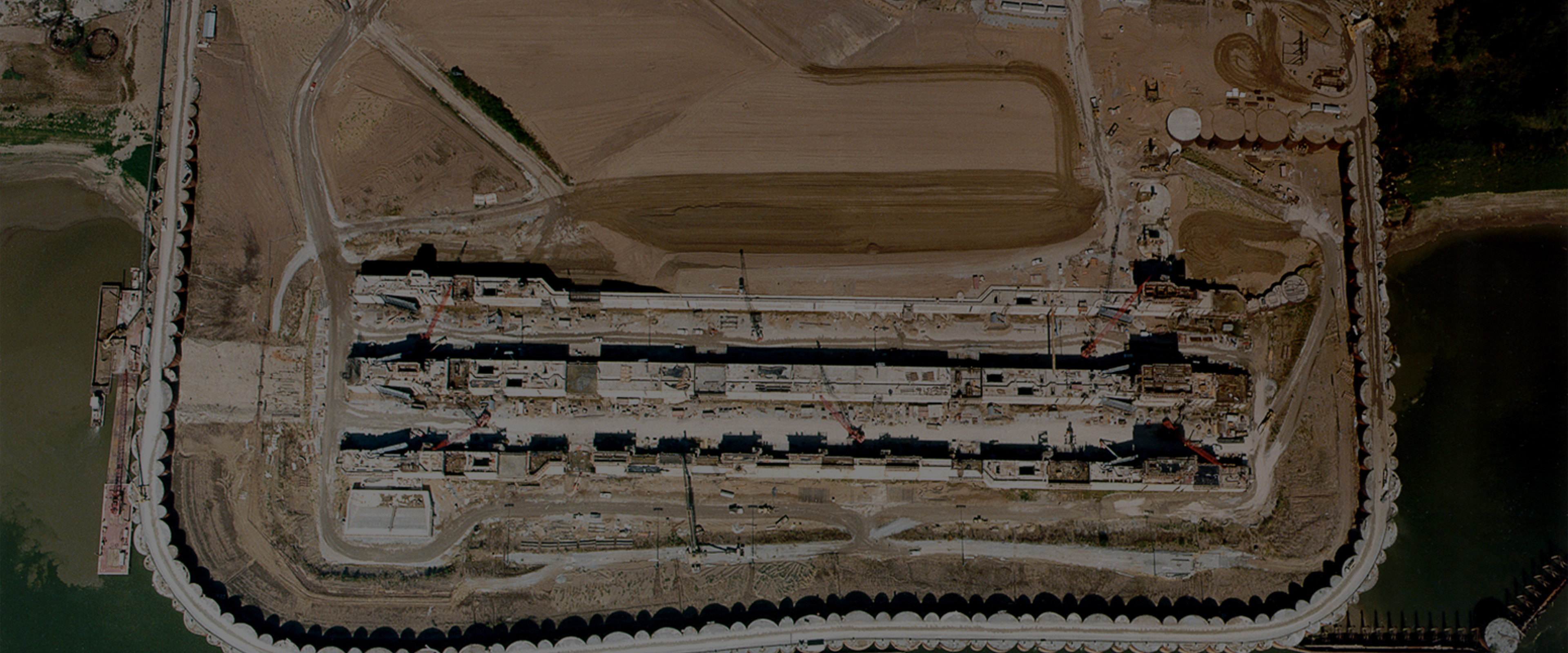
OLMSTED NAVIGATIONAL LOCK, ILLINOIS, USA
The Olmsted Navigational Lock, located on the Ohio River in Illinois, is an impressive engineering feat designed to improve river navigation. Construction began in 1996 under the supervision of the U.S. Army Corps of Engineers and the structure was completed in 2002.
The primary goal of the project was to replace the obsolete locks and dams built in the 1920s and 1930s, which had become bottlenecks for commercial traffic on the Ohio River. The Olmsted Lock was designed to facilitate the passage of barges loaded with goods, significantly enhancing the efficiency of river transport. This infrastructure is crucial for the U.S. economy, as the Ohio River is a key waterway for the transportation of agricultural products, coal, steel, and other essential goods.
The operation of the Olmsted Lock is based on a system of locks that allows vessels to pass between sections of the river at different elevations. This system consists of two large lock chambers, which can accommodate multiple barges at once, significantly reducing waiting times.
The construction of the lock required the use of advanced technologies and durable materials to ensure the structure's longevity. Among the challenges faced were managing the river's high flow rates and the need to operate in a dynamic riverine environment. Construction techniques included the use of giant formworks and the placement of large concrete blocks in the riverbed
The Olmsted Navigational Lock represents a major civil engineering achievement in the United States, symbolizing technological progress for national commerce.

THE WORK AND THE TECHNIQUE
M3 STRUCTURAL CONCRETE
TONS REINFORCED STEEL
M3 FILLS, BACKFILLS AND EMBANKMENTS
KM STEEL H- PILING
KM STEEL SHEET PILING
U.S. Army Corps of Engineers, Louisville District





